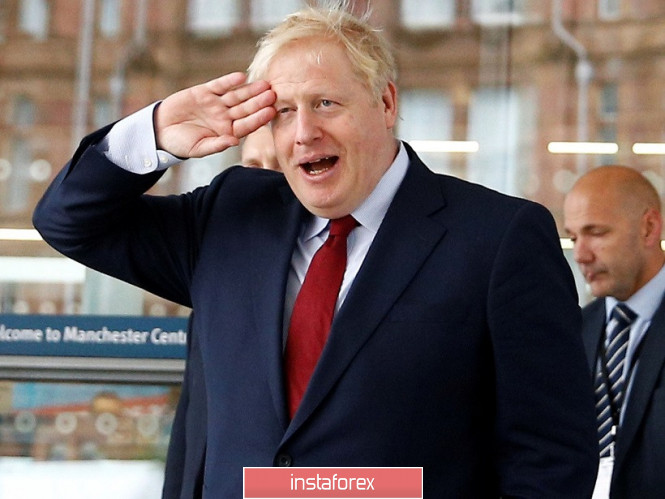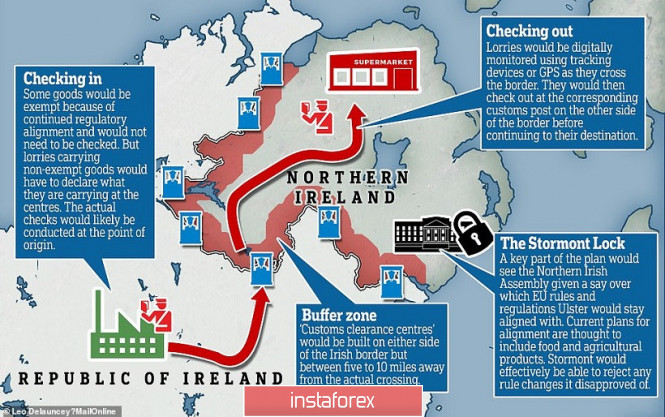The pound-dollar pair came close to the boundaries of the 21st figure yesterday, stopping only at the level of 1,2204. Only extremely weak data on the growth of the ISM manufacturing index in the US were able to extinguish the downward impulse: the US currency weakened throughout the market, and the GBP/USD pair was no exception. However, it only a respite for the pound. The negative fundamental background for the British currency will continue to exert strong pressure on the pair, especially in the run-up to today's event, which we will discuss below.

The dollar index showed strong growth at the beginning of the trading week, gaining a foothold in the area of 99 points. The US currency strengthened amid the ongoing political scandal in the USA, as well as after the announcement of the results of the Reserve Bank of Australia meeting, which lowered the rate for the third time this year, announcing further steps in this direction. This step of the Australian regulator made investors nervous, and not only traders of the AUD/USD pair - almost all dollar pairs reacted to this news. This is a kind of signal indicating the continuation of the "era of monetary easing" of the central bank of the leading countries of the world. Representatives of many regulators confirm such intentions - "dovish" intentions were voiced, in particular, by members of the ECB, Bank of Japan, RBNZ. The Bank of England did not stand aside.
Thus, Michael Saunders, a member of the Monetary Policy Committee, said at the end of last week that the English regulator would most likely have to lower the interest rate - even if the "soft" scenario of Brexit is implemented. In his opinion, this step is appropriate, since a stimulating monetary policy to some extent eliminates the negative consequences of a slowdown in the global economy. As you can see, the Bank of England focuses not only on Brexit, but also on disappointing global growth. Earlier, representatives of the British central bank linked the prospects of monetary policy only with the prospects of a "divorce proceedings".
This fact exerted a fairly strong pressure on the pound, especially since the Brexit issue remains in limbo. The annual conference of the ruling Conservative party started on Sunday in Manchester, England. As experts expect, as a result of its holding, Conservatives will carry out the main (final) proposals to Brussels, which they will support in Parliament. According to the British press, British Prime Minister Boris Johnson will make a statement today. He will unveil his "last sentence" for his European colleagues, making it clear that if they do not agree to the ultimatum voiced, then London will cease to participate in the negotiation process.
Downing Street published only excerpts from this report, which are uninformative in nature. In them, Johnson repeats the long-known theses on the need to implement Brexit on October 31 "with or without a deal." The office of the head of government also announced that the new plan would involve replacing the back-stop mechanism. However, there are no distinct details of the updated script in the official release of the government.
However, some British journalists have gained access to this document. According to them, Johnson's plan is tentatively called "Two Borders for Four Years." The scenario proposed by the prime minister involves the separation of the Irish Sea by the temporary border, with the simultaneous introduction of customs checks between the Republic of Ireland and Northern Ireland. According to Johnson, this will allow Belfast to remain part of the single EU market after the implementation of Brexit, but temporarily - until 2025. Further prospects are more hazy. According to London's preliminary plans, after 5 years, the Parliament of Northern Ireland will decide whether Belfast will act according to the rules of the European Union or whether it will return to the orbit of British law, which is expected to be quite different from European standards.

By and large, the essence of Johnson's updated plan comes down to an alternative to the back-stop mechanism, which has become the main stumbling block to the implementation of Brexit. It is worth noting here that earlier Brussels has repeatedly stated that it will not go to change the already agreed mechanism. Theresa May's draft deal (which failed three times in the House of Commons) suggested that backstop is indefinite, and in the absence of an agreement between London and Brussels, Ulster is still part of the EU single market and customs union to prevent a "tough" border. Representatives of the European side for a long time did not get tired of repeating that they would not deviate from the agreed conditions.
Nevertheless, last night there was unconfirmed information that Brussels allegedly admits the possibility of introducing a time frame for the "backstop". Unnamed sources at Bloomberg said the EU leadership is now considering this scenario.
Thus, the essence of Johnson's new plan is clear. Now the only question is how European leaders will react to this idea. The fate of the pound in the medium term will depend on their rhetoric.
The material has been provided by InstaForex Company - www.instaforex.com